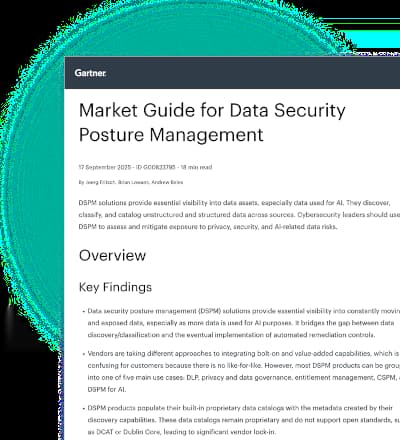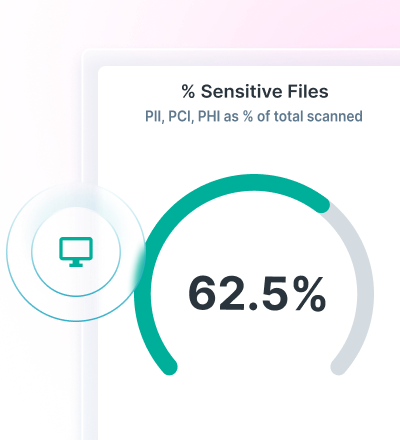
Evite que ataques de malware e phishing alcancem os usuários.
Mantenha sua caixa de entrada segura contra ameaças sofisticadas baseadas em e-mail. O Forcepoint Email Security aumenta os recursos de segurança de provedores de e-mail populares, como o Microsoft Exchange, para detectar e bloquear e-mails suspeitos e arriscados antes que eles tenham a chance de atacar.
Por que usar o Forcepoint Email Security?
Identifique e bloqueie ameaças
Adicione uma camada avançada de defesa para fechar as lacunas de segurança críticas criadas pelos filtros tradicionais baseados em regras de clientes de e-mail populares, que podem deixar passar as ameaças em evolução e sofisticadas que têm como alvo sistemas, dados confidenciais e credenciais de usuário.
Implemente em qualquer lugar
O Forcepoint Email Security suporta a implementação na nuvem, híbrida ou no local, permitindo que as organizações personalizem a proteção com base em suas necessidades e riscos exclusivos.
Notificação em tempo real
Usuários e administradores recebem visibilidade total sobre eventos de segurança de e-mail de entrada por meio de alertas automáticos e relatórios detalhados.
Bloqueie o phishing e o malware
Revise links maliciosos, anexos suspeitos e endereços de remetentes potencialmente falsificados para evitar ransomware, spear-phishing e outras ameaças avançadas.
Perguntas Frequentes
O que exatamente é um "software de segurança de e-mail" além do que o Microsoft 365/Google já me fornece?
O software de segurança de e-mail é uma plataformas que remove e-mails maliciosos/indesejados (phishing, BEC, malware, spam) e adiciona controles, como DMARC, investigação e correção. A Forcepoint aumenta os controles nativos com detecção comportamental, sandboxing e proteção contra spoofing para impedir phishing/malware e pode trabalhar com ou substituir as ferramentas existentes.
Como a Forcepoint lida com phishing, BEC e malware de dia zero especificamente?
A Forcepoint combina detecção comportamental, sandboxing de URLs e anexos e proteção contra spoofing para identificar e bloquear ameaças avançadas (incluindo zero-day).
A Forcepoint cobre as aprovações de DLP e criptografia de e-mail?
Sim. O e-mail security da Forcepoint faz parte de uma plataforma de segurança de dados unificada. Você pode aplicar políticas granulares sobre conteúdo, anexos e destinatários; aplicar políticas consistentes em e-mail, web, aplicativos de nuvem e endpoints; e usar fluxos de trabalho nativos do Exchange de quarentena, criptografia e aprovação de gerentes. A Forcepoint também oferece o Email DLP dedicado (hospedada na nuvem, 99,99% de tempo de atividade) com uma grande biblioteca de classificadores e fluxos de trabalho de aprovação/criptografia.
Quais são as opções de implementação?
Você pode implementar o Forcepoint Email Security em configurações de nuvem, híbridas ou totalmente on-prem, escolhendo o que se adequa ao seu risco e arquitetura. Há integração nativa com o Microsoft Exchange e o serviço fornece alertas automáticos e relatórios detalhados para maior visibilidade.
Isso será integrado ao nosso ambiente do Microsoft 365 e aos processos existentes?
Sim. A Forcepoint integra-se nativamente ao Microsoft Exchange, suporta fluxos de trabalho familiares de usuários/administradores (quarentena, criptografia, aprovações de gerentes) e não requer agentes de endpoint. Isso ajuda a reduzir o gerenciamento de mudanças, dando às equipes de segurança mais controle.
Como é o impacto de administradores/usuários — alertas, relatórios, ajuste e atendimento contínuo?
Os administradores recebem notificações em tempo real e relatórios detalhados; os relatórios podem ser agendados e enviados por e-mail em uma cadência.
Você suporta controles de TLS e segurança de transporte que podemos aplicar por conexão?
Sim. O Forcepoint Email Security pode aplicar o TLS com níveis de segurança configuráveis (por exemplo, Verify + CN) e força de criptografia (128/256 bits), com orientação sobre teste/validação de TLS de saída. Se a política exigir TLS e ela não estiver disponível, as mensagens são rejeitadas em vez de enviadas sem formatação.










